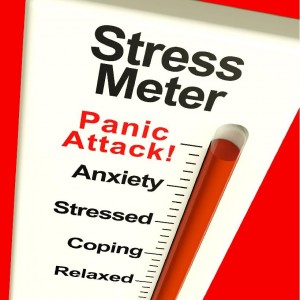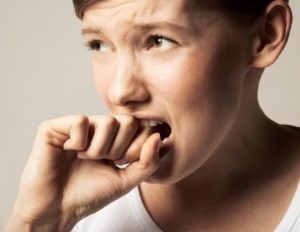Anxiety disorders are a group of mental illnesses that cause people to feel excessively frightened, distressed, or uneasy during situations in which most other people would not experience these same feelings
 Panic Disorder
Panic Disorder
6 million, 2.7% – Women are twice as likely to be affected as men. Very high comorbidity rate with major depression.
- Obsessive-compulsive Disorder (OCD)
2.2 million, 1.0% – Equally common among men and women. The median age of onset is 19, with 25 percent of cases occurring by age 14. One-third of affected adults first experienced symptoms in childhood.
- Posttraumatic Stress Disorder (PTSD)
7.7 million, 3.5% – Women are more likely to be affected than men. Rape is the most likely trigger of PTSD:
65% of men and 45.9% of women who are raped will develop the disorder.
Childhood sexual abuse is a strong predictor of lifetime likelihood for developing PTSD.
- Phobias
19 million, 8.7% – Women are twice as likely to be affected as men. Typically begins in childhood; the median age of onset is 7.
- Generalized Anxiety Disorder (GAD)
GAD affects 6.8 million adults, or 3.1% of the U.S. population. Women are twice as likely to be affected as men.
- Social Anxiety Disorder
15 million, 6.8% – Equally common among men and women, typically beginning around age 13. According to a 2007 ADAA survey, 36% of people with social anxiety disorder report experiencing symptoms for 10 or more years before seeking help.
 Anxiety disorders are the most common mental illness in the U.S., affecting 40 million adults in the United States age 18 and older, or 18% of the population
Anxiety disorders are the most common mental illness in the U.S., affecting 40 million adults in the United States age 18 and older, or 18% of the population- Anxiety disorders are highly treatable, yet only about one-third of those suffering receive treatment.
- Anxiety disorders cost the U.S. more than $42 billion a year, almost one-third of the country’s $148 billion total mental health bill, according to “The Economic Burden of Anxiety Disorders,” a study commissioned by ADAA (The Journal of Clinical Psychiatry, 60(7), July 1999).
- More than $22.84 billion of those costs are associated with the repeated use of health care services; people with anxiety disorders seek relief for symptoms that mimic physical illnesses.
- People with an anxiety disorder are three to five times more likely to go to the doctor and six times more likely to be hospitalized for psychiatric disorders than those who do not suffer from anxiety disorders.
